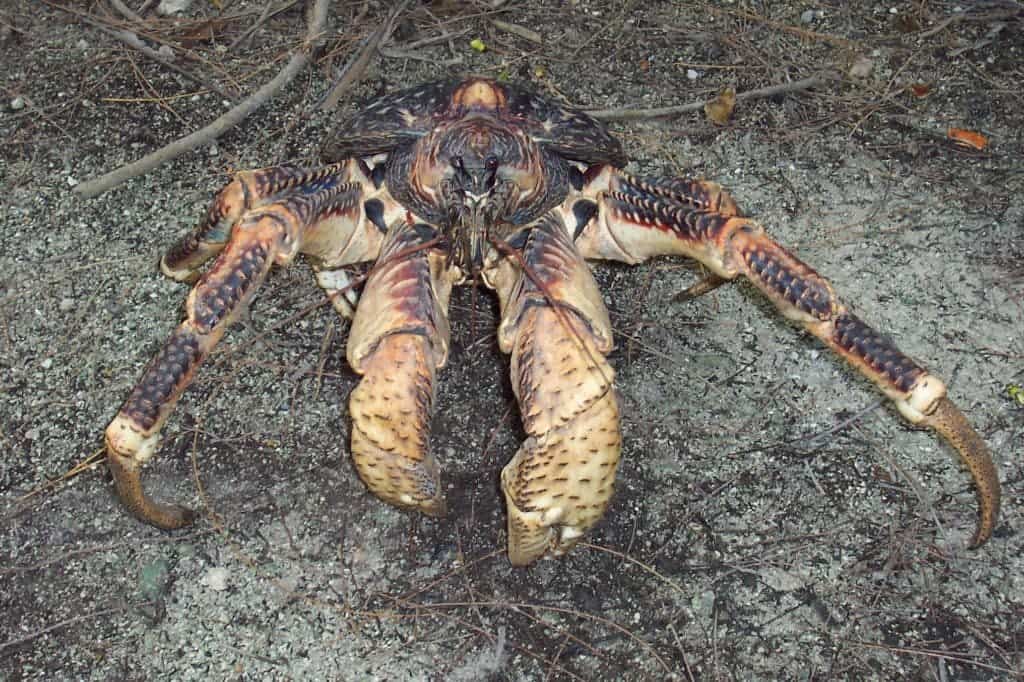The coconut crab (Birgus latro) really means business. A type of hermit crab, this huge fellow that can grow up to one meter (3 ft.) across has the strongest pinch of all crustacean. In fact, out of all the land animals known to man, only the alligator has a stronger crushing force, found a group of researchers from Japan who placed sensors on the crab’s claws.
Researchers collected 29 coconut crabs from the Okinawa Island, Japan, then proceeded to measure the crustaceans pinching prowess. The crabs varied greatly in size and mass, from juveniles less than a pound to five pound big daddies. When Charles Darwin first saw these crabs in the Cocos (Keeling Islands) in the Indian Ocean during his voyages on the Beagle, he described them as “monstrous sized.”
The clamping force was found to be directly proportional to body size. Based on their sample size, experimental results ranged from 29 to 1,765 Newtons or 7 to 400 pounds of force. Considering the largest coconut crab ever found used to weigh 9 pounds, the researchers reckon it must have packed 3,300 Newtons or 770 pounds of force. That’s roughly equal to the punching force exerted by Olympic-grade boxers.
“The mighty claws of these crabs are useful weapons to deter predators and competitors,” say scientists from the Okinawa Churashima Foundation.
“In summary, coconut crabs have the ability to exert the greatest force among almost all terrestrial animals.
Coconut crabs first appeared five million years and are the descendants of a hermit crab ancestor. Unlike their ancestors, however, coconut crabs have no need to scavenge shells. Their hardened calcified torso provides ample protection and, besides, who would want to mess with those pincers?
The evolutionary advantage of such strong pincers doesn’t stop at protection against predators. Using their supersized claws, the coconut crab can gain access to food sources unavailable to other animals in their habitat, things like hard-bodied animals or goodies trapped inside the bark of trees. That and, of course, coconuts!










